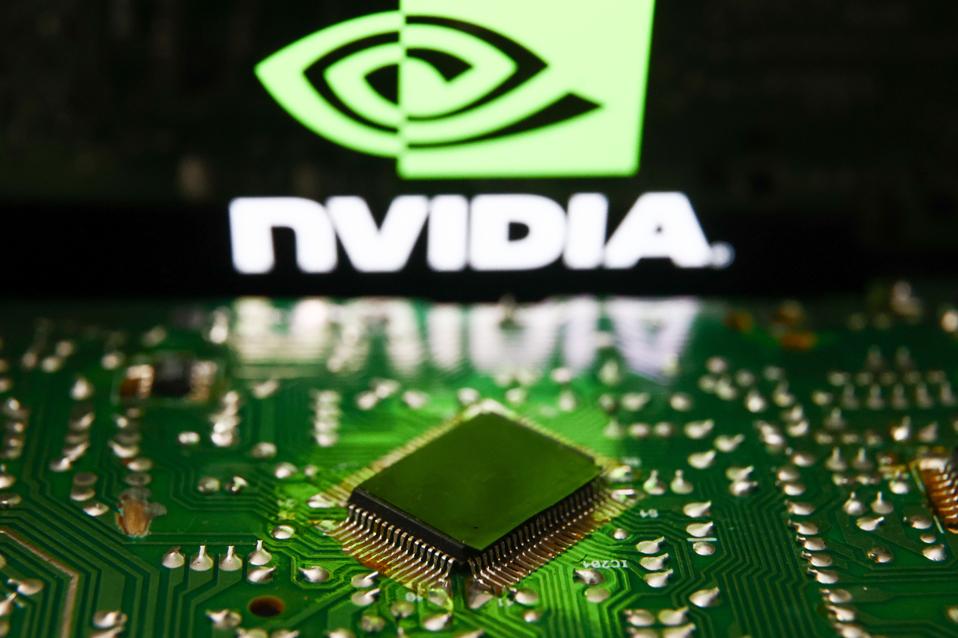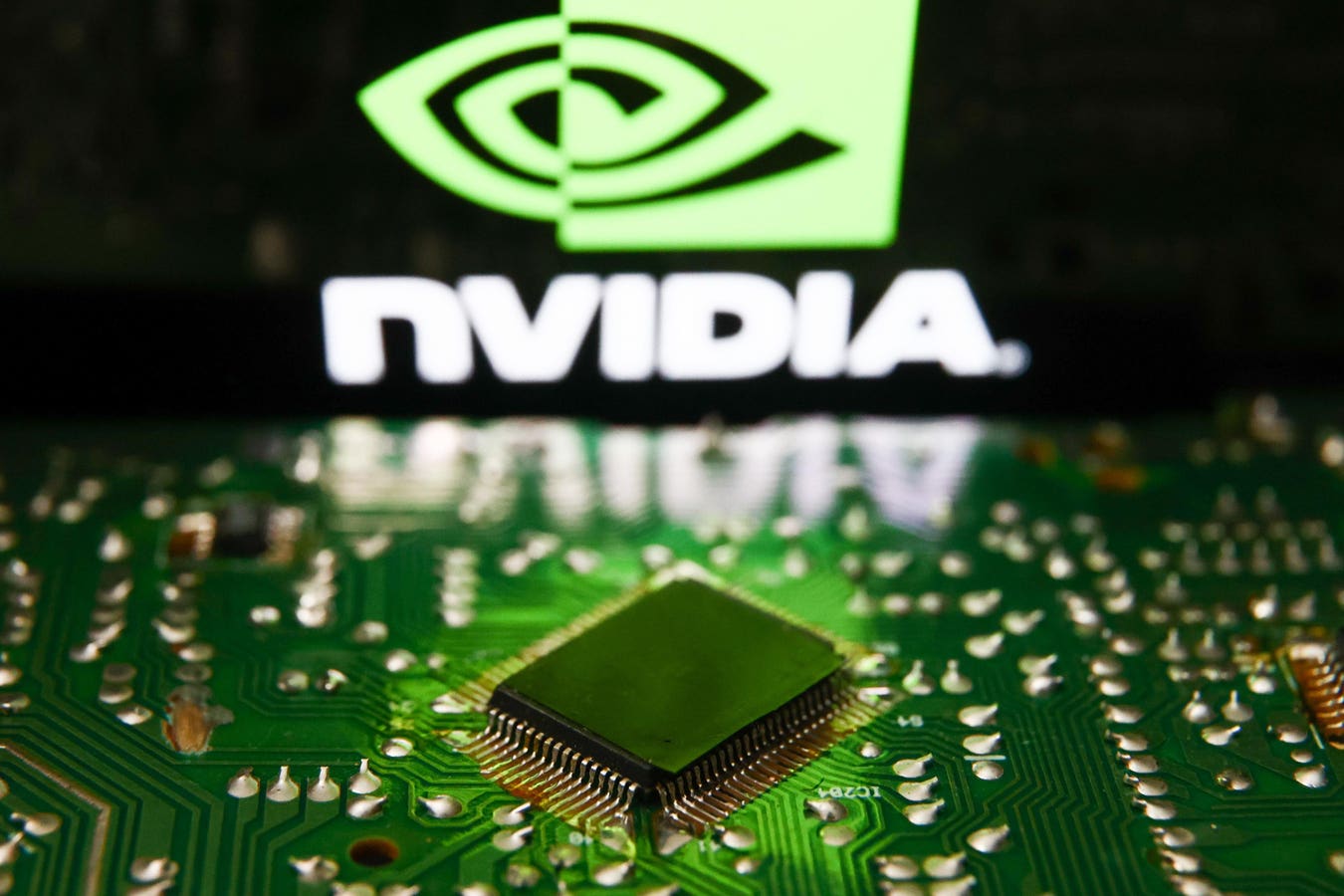Nvidia (NASDAQ:NVDA) stock has risen by 23% since early January and remains up almost 80% from lows seen in April as AI driven demand remains strong. However, there are concerns. One word. Okay, two maybe. Customer concentration. In Q1 FY’26, (ended April 2025) Nvidia disclosed that one customer accounted for 16% of revenue and another for 14%, both tied to its Compute & Networking segment. That’s up from 11% and 13% sales from two direct customers in the same quarter a year ago. We’re worried about that. Imagine paying close to $35 billion a year to Nvidia. How long is that going to happen? Separately, is PepsiCo stock still attractive? See What’s Happening With PepsiCo Stock?

Nvidia logo displayed on a phone screen and microchip and are seen in this illustration photo taken … More in Krakow, Poland on July 19, 2023. (Photo by Jakub Porzycki/NurPhoto via Getty Images)
NurPhoto via Getty Images
Although Nvidia doesn’t name them, Amazon (NASDAQ:AMZN), Microsoft (NASDAQ:MSFT), Alphabet (NASDAQ:GOOG), and Meta are widely understood to be among its largest customers. These customers are in the middle of an unprecedented AI spending spree. Amazon is expected to spend up to $105 billion on capex in 2025, while Microsoft, Alphabet, and Meta are forecast to spend as much as $80 billion, $75 billion, and $72 billion respectively, much of it earmarked for AI infrastructure. A substantial portion of this will flow directly to Nvidia for GPU purchases. AI data centers also require costly land, building, electricity infrastructure, cooling, and networking systems. However, we aren’t so sure these companies will keep investing the way they have on AI in the longer run. Why is that?
Sketchy Returns on AI Investments
The economics of the end market for AI, particularly for GPU-driven applications, remains uncertain. Most of Nvidia’s customers likely aren’t generating meaningful returns on their investments yet. Let’s take Google, for instance. Its core search business, which generated over $170 billion in 2023 via ad sales, is being disrupted by AI-powered search tools such as Perplexity, and ChatGPT. While Google has built Gemini, a cutting edge AI search offering of its own, it does not currently offer a comparable monetization model. That said, Waymo has a 2x potential for Google. As shareholders eventually seek better returns on investments, we could see capital spending on GPU chips cool off, impacting the likes of Nvidia.
Model Training Slowdown?
Over the past two years, companies have heavily invested in AI model training, with Nvidia’s GPUs emerging as the top choice on account of their performance and efficiency. AI model training is a compute-intensive process that may eventually slow. Unlike traditional cloud growth, AI model training is compute-heavy but often front-loaded making a slowdown in future GPU demand quite possible. Incremental performance gains are expected to diminish as models grow larger, and the availability of high-quality training data could become a bottleneck. As training demand declines, GPU demand could weaken. Now training these massive models is more of a one-time affair that requires considerable computing power and Nvidia has been the biggest beneficiary of this, as its GPUs are regarded as the fastest and most efficient for these tasks. Compare evolution of Nvidia valuation over time.
Building In House AI Chips
At the same time, big tech giants aren’t relying solely on Nvidia – they are all actively developing their own custom AI chips. Google is building its TPU chips, while Amazon, Microsoft with Maia, and Meta too, have their own silicon developments focused on AI. While these chips have a long way to go to match Nvidia’s performance in compute heavy training tasks, they could be well optimized for their respective company’s AI models and code. Moreover, by building their own chips, these companies could be looking to increase bargaining power with Nvidia and create some independence from Nvidia’s supply chain and pricing. Even if Nvidia maintains its technological edge, the concentration of its revenue in a handful of hyperscalers, who are both customers and emerging competitors, could be a vulnerability.
Impact on Nvidia Stock
NVIDIA’s Revenues have surged by over 2x over the last year and are on track to grow by over 50% this year per consensus estimates. While the stock trades at above 40x estimated FY’26 earnings, this isn’t too high considering the company’s growth rates. That said, these projections assume hyperscaler demand continues unabated. A pullback from any major customers – whether due to internal chip development, more cautious AI returns, or overall tech spending moderation – could lead to lower pricing, lower volumes, and a sharp erosion of profitability. This is especially critical for a company like Nvidia, where such a large share of revenue is tied to a handful of customers. This could lead to a sharp contraction in valuation multiples. The risks here aren’t hypothetical, either. Recent evidence from 2022 shows that NVDA stock lost over 60% of its value within just a few quarters. In fact, the stock fell by close to 35% over Q1 2025 due to concerns about tariffs. This could very well repeat itself if big customers show signs of cutting back on spending.
Not too happy about the volatile nature of NVDA stock? The Trefis High Quality (HQ) Portfolio, with a collection of 30 stocks, has a track record of comfortably outperforming the S&P 500 over the last 4-year period. Why is that? As a group, HQ Portfolio stocks provided better returns with less risk versus the benchmark index; less of a roller-coaster ride, as evident in HQ Portfolio performance metrics.

